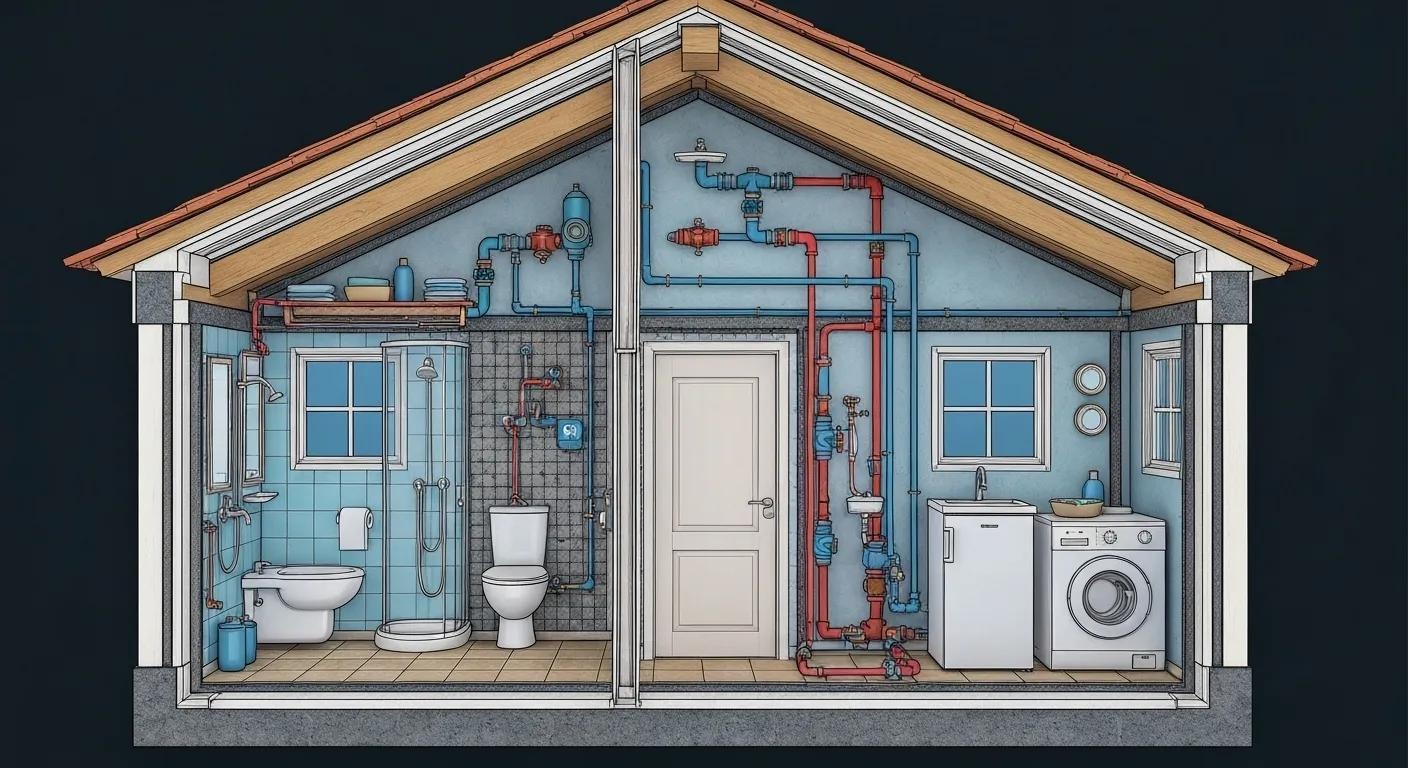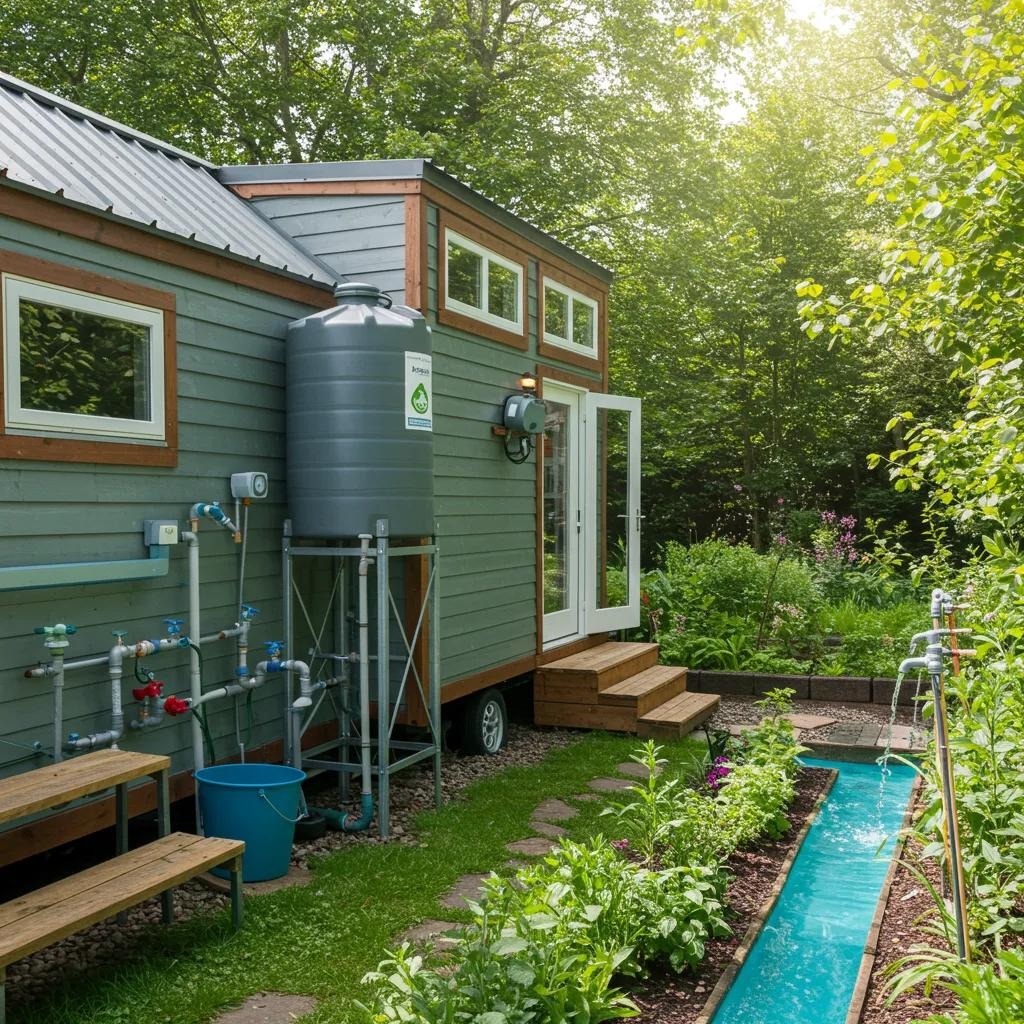Brisbane’s tiny house build cost hinges on efficient plumbing design, material selection, and regulatory compliance to ensure comfort and durability within a compact footprint. Integrating water supply, drainage, hot water, and waste management into a 15–50 m² dwelling demands precision engineering, whether you’re on-grid or off-grid. This guide examines key plumbing systems, breaks down all cost factors in the Brisbane market, navigates permits and regulations, explores sustainable solutions, highlights Livit Constructions’ custom expertise, outlines total build budgets, and clarifies common plumbing questions. By the end, you’ll understand how plumbing influences your tiny house build cost and why Livit Constructions’ 20 years of residential experience delivers reliable, compliant installations in Brisbane.

Tiny house plumbing systems unify water supply, waste removal, venting, fixture connections, and water heating into space-efficient solutions. Brisbane builds typically adopt either on-grid or off-grid infrastructure, each with distinct installation requirements, operational costs, and site implications. Core subsystems include potable water delivery, drainage and vent stacks, hot water generation, and waste management. Proper integration prevents leaks, maximises energy efficiency, and ensures compliance with Queensland standards. Understanding these systems creates a foundation for precise budgeting and design.
Livit Constructions leverages its two decades of residential building expertise to tailor plumbing systems for compact layouts, ensuring each component fits unique tiny home designs. From routing flexible PEX piping through cabinetry to selecting eco-friendly fittings, every decision balances cost, performance, and regulatory adherence. The following sections compare system types, define essential components, and illustrate integration strategies that optimise both functionality and build cost.
On-grid plumbing connects directly to Brisbane City Council’s municipal water mains and sewer network, providing continuous water flow and waste removal. This approach minimises storage requirements and simplifies maintenance but incurs connection fees, metered rates, and potential sewer upgrade costs. Conversely, off-grid plumbing relies on rainwater tanks, septic or composting toilets, and greywater recycling, eliminating council fees but adding tank, pump, filter, and septic system expenses. For instance, a basic on-grid hook-up may cost AUD 1,500–4,000 in connection and materials, whereas an off-grid setup with a 5,000 L tank, pump, and septic field can range from AUD 3,000 to 8,000 depending on capacity and site work.

This comparison highlights how choice of infrastructure influences both upfront investment and ongoing operational costs for Brisbane tiny homes.
The fundamental plumbing components in a tiny house include:
Each element must be sized and positioned to optimise flow rates, minimise heat loss, and comply with the Plumbing and Drainage Act 2018. Integrating these components into a 15–50 m² layout demands strategic routing to avoid service access issues and preserve living space.
These core components set the stage for bespoke plumbing designs that adapt to varied tiny home architectures.
Livit Constructions integrates plumbing into custom tiny home floor plans by coordinating pipe runs with furniture modules and service cores. Water lines are concealed within cabinetry panels, and flexible PEX piping navigates tight bends to reduce fittings and potential leak points. Drainage stacks align with vertical shafts behind service walls, allowing stacked fixtures and minimising roof penetrations. This modular approach streamlines installation, reduces labour time, and supports future maintenance access.
By collaborating early in the design phase, Livit’s team ensures plumbing layouts complement electrical, HVAC, and structural elements. Clients benefit from seamless integration that preserves interior aesthetics and optimises every square metre. This tailored methodology enhances system reliability, lowers installation costs, and delivers compliant solutions aligned with Brisbane’s building regulations.
Tiny house plumbing costs in Brisbane comprise materials, fixtures, water heating, waste management, and professional labour. Each category carries variable rates based on quality, capacity, and site specifics. Understanding this breakdown enables detailed budgeting, avoids cost overruns, and ensures transparent pricing.
Material selection impacts both durability and budget.
Fittings, valves, and sealants add approximately 20% to piping expenditure. Opting for PEX reduces installation time and material waste, making it the preferred choice for Brisbane tiny homes.
Compact fixture pricing reflects space constraints and water-saving features:
Choosing water-efficient fixtures can reduce long-term utility bills, while composting toilets eliminate sewer fees and support off-grid independence. Fixture selection balances function, aesthetics, and tiny house build cost.
Water heating in a tiny house can use:
Tankless systems save space and energy but carry higher initial costs. Storage heaters offer lower upfront prices but require dedicated space and insulation. Proper sizing based on occupant needs ensures efficient operation and cost-effective performance.
Waste disposal options affect both environmental footprint and build budget:
Selecting a waste management solution aligns with site conditions, regulatory requirements, and sustainability goals, directly influencing the tiny house build cost.
Licensed plumbers in Brisbane charge between AUD 80 and 200 per hour. A complete tiny house plumbing installation typically requires 5–10 labour hours, resulting in:
Engaging a QBCC-licensed professional ensures compliant work, warranty protection, and timely project delivery. Transparent labour estimates help clients allocate budget and avoid unexpected fees.
Navigating Queensland’s building and plumbing legislation guarantees safe, compliant installations for tiny houses. The Building Act 1975 and Plumbing and Drainage Act 2018 set statewide technical standards, while local approvals from Brisbane City Council address site-specific requirements. Understanding these regulations prevents costly rework, enforces quality standards, and protects occupants.
Livit Constructions’ 20 years of residential experience equips clients with precise guidance on permit pathways, documentation, and certified installer obligations. The following subsections detail the relevant legislative framework, council approvals, and the importance of licensed plumbing professionals.
The Building Act 1975 establishes the regulatory framework for structural compliance, while the Plumbing and Drainage Act 2018 governs water supply, sanitary plumbing, and drainage systems. Both Acts reference the National Construction Code (NCC), specifying technical requirements for materials, installation methods, and safety measures. Tiny houses classified as permanent dwellings or relocatable structures must meet standards for water efficiency, backflow prevention, and system access.
Compliance with these Acts ensures that plumbing installations withstand Brisbane’s climate, protect public health, and adhere to state legal standards, underpinning long-term building integrity.
Brisbane City Council distinguishes between permanent tiny houses on foundations and mobile units. Permanent dwellings require:
Mobile or relocatable units on wheels may need:
Council applications demand site plans, service diagrams, and certified installer declarations. Early coordination with council planners accelerates approval timelines and aligns tiny house build cost forecasts with permit fees.
Engaging a QBCC-licensed plumber secures compliance with state licensing laws and technical standards. Licensed professionals issue Form 18A (Compliance Certificate) for water supply work and Form 19 (As–Constructed Compliance) for drainage systems.
These certifications validate installation quality, facilitate insurance coverage, and support resale value. Unlicensed work risks non-approval, fines, and safety hazards.
Licensed installers also guarantee workmanship, apply relevant product warranties, and navigate inspections, ensuring plumbing reliability in Brisbane’s tiny homes.

Sustainable plumbing harnesses water recycling, rainwater harvesting, and eco-friendly fixtures to lower utility bills and minimise ecological footprints. By recycling greywater and capturing rainwater, tiny homes in Brisbane can reduce mains water demand and sewer charges. Incorporating these strategies at the design stage maximises system efficiency and offsets installation costs over time.
Livit Constructions advises on selecting, sizing, and integrating sustainable subsystems that comply with Queensland regulations while enhancing self-sufficiency. The subsections below explore key sustainable plumbing solutions and their cost implications.
Greywater recycling diverts wastewater from showers, basins, and laundry through filters and diverters for landscape irrigation. Benefits include:
Complete greywater systems for tiny homes cost AUD 2,210–2,375 ex-factory in Brisbane, plus installation labour of AUD 800–1,500. Long-term savings on water bills often recover system costs within 5–7 years while promoting sustainable living.
Rainwater harvesting captures roof runoff into storage tanks, filters debris, and supplies non-potable or, when treated, potable water. Core components include:
Installation adds AUD 1,000–2,500 labour depending on tank size and site access. Harvested rainwater can supply toilets, laundry, and external taps, reducing mains reliance and tiny house build cost over time.
Livit Constructions combines 20 years of residential building expertise with a commitment to quality workmanship, regulatory compliance, and client satisfaction. Our integrated approach to tiny house construction and plumbing ensures seamless coordination, transparent costing, and customised solutions that meet both on-grid and off-grid requirements. Clients benefit from responsive service, precise documentation, and durable installations.
Livit Constructions follows a rigorous quality assurance process that aligns with the National Construction Code and relevant Queensland Acts. Each installation undergoes staged inspections, pressure testing, and certification by QBCC-licensed plumbers. Detailed as-constructed drawings and compliance forms (Form 18A, Form 19) accompany every project, guaranteeing council approval and long-term system reliability.
This disciplined methodology fosters trust, minimises rework, and secures high standards of safety and performance.
Our custom solutions range from concealed PEX manifolds that simplify service access to modular greywater diverters integrated within furniture units. We design compact service cores that house water heaters, pumps, and controls in sound-insulated compartments. For off-grid clients, we size rainwater tanks, solar-boosted heaters, and composting toilets to suit occupancy patterns and site conditions.
These tailored systems optimise floor plans, reduce installation time, and enhance overall tiny house build cost efficiency.
To explore your tiny house project, contact Livit Constructions for a detailed consultation. Our team will assess your site, review design concepts, and provide a transparent breakdown of plumbing and construction costs. With clear timelines, certified installers, and no-surprise pricing, Livit makes building your dream tiny home in Brisbane straightforward and cost-effective.
Calculating the total cost to build a tiny house in Brisbane requires aggregating base construction, plumbing, permits, site works, and finishing allowances. On average, complete tiny house builds range from AUD 79,000 to 120,000, with high-end custom designs reaching up to 150,000. Plumbing typically represents 5–10% of the overall budget, depending on system complexity.
With plumbing accounting for AUD 7,000–15,000 of a AUD 100,000 build, clients should allocate:
Balancing quality materials, efficient layouts, and early permit planning ensures plumbing enhances value without inflating tiny house build cost.
Beyond core plumbing, factor in:
Including these expenses early prevents budget gaps and supports seamless project delivery.
Plumbing is often the most intricate subsystem in a tiny house build. Clients frequently ask about cost ranges, permit necessities, regulatory compliance, and labor charges. Clear answers to these questions streamline planning and ensure informed decisions.
Basic plumbing systems in Brisbane cost AUD 1,500–4,000 for materials and fixtures, with professional installation adding AUD 500–2,000 in labour. Combined, average plumbing expenditure ranges from AUD 1,300 to 3,580 when mid-range materials and efficient designs are applied.
Yes, fixed tiny homes require building approval under the Building Act 1975 and plumbing approval under the Plumbing and Drainage Act 2018. Brisbane City Council also mandates separate plumbing permits, and all work must be certified by a QBCC-licensed plumber.
Tiny houses must comply with the National Construction Code as referenced in Queensland legislation. Permanent dwellings and relocatable units each follow distinct council guidelines for site services, structural requirements, and water efficiency standards.
Plumbers in Brisbane charge AUD 80–200 per hour. A typical tiny house installation requires 5–10 hours of labour, resulting in labour costs of AUD 500–2,000. Engaging licensed professionals ensures compliance, quality assurance, and long-term reliability.
Building a tiny house in Brisbane involves careful budgeting of plumbing systems, from material selection and fixture costs to permit fees and labour. By partnering with Livit Constructions, you gain access to bespoke designs, transparent costing, and certified installations that meet all Queensland regulations. Contact Livit Constructions today for a personalised quote and start planning your efficient, sustainable tiny home with confidence.